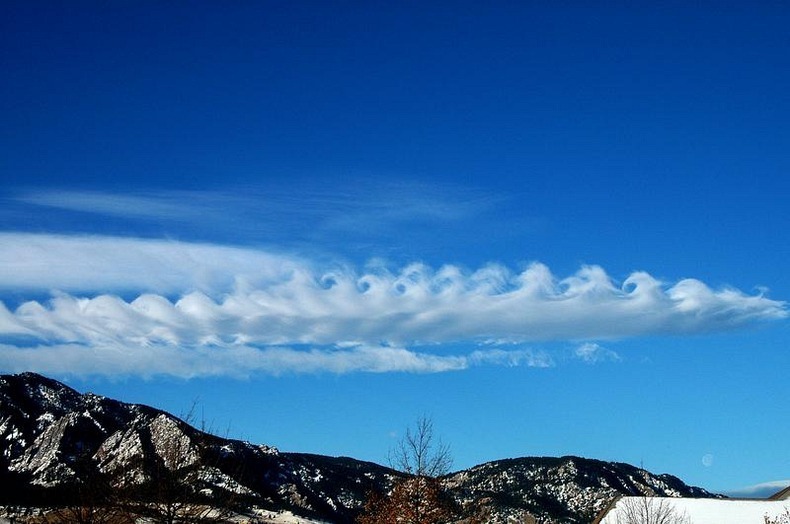Kelvin Helmholtz Clouds
Kelvin-Helmholtz clouds resemble waves breaking in the ocean. These clouds are formed between two layers of air with different densities and traveling at different speeds. If a warm, less dense layer of air exists over a layer of colder, denser air, and the wind shear across the two layers is strong enough, eddies will develop along the boundary. Evaporation and condensation of the eddies render them visible as wave shaped clouds.
The cloud is named after Lord Kelvin and Hermann von Helmholtz who studied the dynamics of two fluids of different densities when a small disturbance, such as a wave, was introduced at the boundary connecting the fluids. The Kelvin–Helmholtz instability occurs not only in clouds but also in the ocean, Saturn's bands, Jupiter's Red Spot, and the sun's corona.












No comments:
Post a Comment